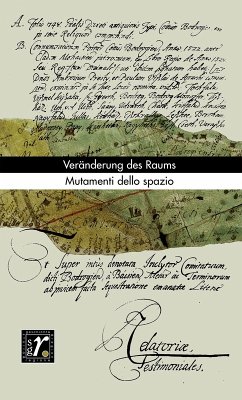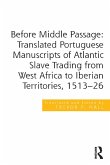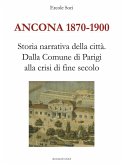Raumstrukturen mit ihren Bedeutungszuschreibungen unterliegen immer wieder Veränderungen. Gehen solche Umgestaltungen über längere Zeiträume hinweg vor sich, können sie leichter in die jeweiligen Raumkonzeptionen integriert werden. Kommt es jedoch zu plötzlichen Veränderungen, führt dies häufig zu Konflikten, weil sie als Eingriff in die eigene Ordnung und Orientierung wahrgenommen werden. Dies ist beispielsweise der Fall, wenn es zur Umsetzung von Verwaltungsreformen kommt. In Zeiten von grundlegenden Verwaltungsveränderungen trafen verschiedene Raumvorstellungen aufeinander. Wenn beispielsweise eine Herrschaft beabsichtigte, in einem Gebiet eine neue Ordnung zu implementieren, trat diese in der Folge meist in Konkurrenz zur Raumwahrnehmung und Raumnutzung der dort lebenden Bevölkerung. Ausgehend von diesem Ansatz trifft in diesem Heft von "Geschichte und Region" die Analyse von Raumkonstruktionen auf die neuere Verwaltungsgeschichte. Alle vier Beiträge beschäftigen sich mit der Implementierung oder mit Implementierungsversuchen von neuen Verwaltungsstrukturen, die bestehende Raumkonstruktionen herausforderten. *************** Le strutture dello spazio, insieme ai significati che vengono loro attribuiti, sono state e sono sempre soggette a continui mutamenti. Quanto più lungo è l'arco di tempo in cui tali modificazioni si realizzano, tanto più facile risulta integrarle nelle rappresentazioni dello spazio degli individui. I cambiamenti improvvisi, invece, generano spesso conflitti perché vengono percepiti come un'interferenza nel proprio ordine e orientamento. Questo è il caso, ad esempio, dell'introduzione di riforme amministrative. In periodi di radicali cambiamenti amministrativi si sono scontrate diverse rappresentazioni dello spazio. Quando, ad esempio, un governo mirava a realizzare un nuovo ordinamento in un territorio, ciò avveniva di solito in concorrenza con la percezione e l'utilizzo dello spazio da parte della popolazione che lo abitava. In questo numero di "Storia e regione" la ricerca sulle costruzioni dello spazio coninvolge la nuova storia dell'amministrazione. Tutti e quattro i contributi raccolti affrontano progetti, riusciti o meno, di applicazione di nuove strutture amministrative che hanno messo in crisi le costruzioni dello spazio preesistenti. Editorial/Editoriale Veränderung des Raums/Mutamenti dello spazio Attila Magyar Territorien, Grenzen und Grenzziehungen in den südungarischen Komitaten Bács und Bodrog am Anfang des 18. Jahrhunderts Davide De Franco Tra autonomia e privilegio: le istituzioni collettive negli spazi alpini occidentali durante il XVIII secolo Margret Friedrich Von der schwierigen Konstituierung neuer Herrschaftsräume. Die Tiroler Kreishauptleute im ersten Jahr ihrer Tätigkeit Milan Hlavacka Die Verräumlichung der bürokratischen Kommunikation durch politisch-juristische und verwaltungstechnische Institutionalisierung in Böhmen bis zum Ersten Weltkrieg Aufsätze/Contributi Andrea Tomedi Giuramenti di fedeltà e investiture nel comitatus Tridentinus (XII-XIII secolo): le forme locali della fides e della concessione di beni Gabriele Marcon Mobilità artigianale in area alpina. L'esempio di alcuni vetrai italiani in Tirolo nel XVI secolo Michael Kalb "Die schleichende Krisis". Die bosnische Annexionskrise 1908/1909 in bürgerlichen Vorarlberger Zeitungen Forum Ingrid Böhler Ostpreußen - eine Reise in ein Land, das es nicht mehr gibt. Ein Bericht Marina Hilber Konfliktraum Geburtsbett. Forschungsbericht über eine patientinnen-orientierte Fallstudie zur Wahl des Geburtsbeistandes im vormärzlichen Tirol und Vorarlberg Rezensionen/Recensioni Katia Occhi (a cura di), Per una storia degli archivi di Trento, Bressanone e Innsbruck. Ricerche e fonti (secoli XIV-XIX) (Erika Kustatscher) Niels Grüne/Jonas Hübner/Gerhard Siegl (Hg.), Ländliche Gemeingüter/Rural Commons. Kollektive Ressourcennutzung in der europäischen Agrarwirtschaft/Collective Use of Ressources in the European Agrarian Economy (Mauro Nequirito) Christine Fertig/Margareth Lanzinger (Hg.), Beziehungen, Vernetzungen, Konflikte. Perspektiven Historischer Verwandtschaftsforschung (Elisabeth Joris) Markus Wurzer, "Nachts hörten wir Hyänen und Schakale heulen." Das Tagebuch eines Südtirolers aus dem Italienisch-Abessinischen Krieg 1935-1936 (Sebastian De Pretto) Kurt Drexel, Klingendes Bekenntnis zu Führer und Reich: Musik und Identität im Reichsgau Tirol-Vorarlberg 1938-1945 (Michael Wedekind) Sandra Hupfauf, Die Lieder der Geschwister Rainer und "Rainer Family" aus dem Zillertal (1822-1843). Untersuchungen zur Popularisierung von Tiroler Liedern in Deutschland, England und Amerika (Gisela Probst-Effah) Diego D'Amelio/Andrea Di Michele/Giorgio Mezzalira (a cura di), La difesa dell'italianità. L'Ufficio per le zone di confine a Bolzano, Trento e Trieste (1945-1954) (Nicola Tonietto) May B. Broda/Ueli Mäder/Simon Mugier (Hg.), Geheimdienste - Netzwerke und Macht. Im Gedenken an Hans Eckert. Basler Advokat, Flüchtlingshelfer und Nachrichtenmann 1912-2011 (Peter Pirker) Magdalena Pernold, Traumstraße oder Transithölle? Eine Diskursgeschichte der Brennerautobahn in Tirol und Südtirol (1950-1980) (Georg Rigele) Abstracts Attila Magyar Territories, frontiers and the drawing of boundaries in the southern Hungarian counties of Bács and Bodrog at the start of the eighteenth century The article illustrates certain aspects of the process of shaping territorial space, using the example of the legal dispute between the southern Hungarian counties of Bács and Bodrog. The documents studied for this research show a great variety in terms of the methods and approaches used by the members of the relevant commissions, the participating lawyers, and the people interviewed on the ground to describe and perceive the space and boundaries between the particular territories. The article traces the logic behind the giving of evidence in the boundary-drawing process. This was based on historical documents and maps on the one hand, and on the questioning of witnesses on the other. The resulting boundaries and territories of the counties can be described as the out come of a process that brought forth new spaces on the basis of the memory passed down both orally and in written form. Davide De Franco Between autonomy and privilege: collective institutions in western alpine territories during the eighteenth century This essay focuses on alpine institutions in the Sesia valley (Valsesia) and the Briançon region (the Briançonnais) in the early modern era. From the fourteenth century onwards, the western Alps were characterized by the emergence of valley federations, which obtained from the territorial ruler statutes and privileges that guaranteed wide-ranging autonomy as regards political, fiscal and resource management. The particular status gained under these statutes contributed decisively to the organization and administration of alpine spaces. Throughout the course of the ancien régime, the autonomy pacts were renewed by the principle actors involved, thereby confirming the spatial organization of these regions located on the state borders. After the War of Spanish Succession (1701-1714), the Valsesia and the Italian side of the Briançonnais came into the possession of the House of Savoy. During the Enlightenment, a new class of lawmen serving the king implemented reforms that re-defined the relationship between central and local institutions. The administrative reorganization of the Savoy territories moved towards greater control by the central state power, thus bringing about conflict with the customs and statutes of the alpine regions and causing a gradual weakening of local institutions. Margret Friedrich The difficulties of constituting new ruling spaces. Tyrolean district captains in the first year of their activity As part of the reorganization of the Habsburg composite monarchy towards a state with a centralized administration, new administrative spaces were created in the form of the district (Kreis). The article illustrates this process by taking the example of Tyrol, which was initially divided into six districts. It examines how, in general terms, the traditional urban and rural authorities, the institution of the church, and the population absorbed this new spatial arrangement, which constituted a profound intervention in everyday life. The article considers if, and how, the aforementioned historical actors coped with and appropriated the new spatial and organizational parameters, and thereby made possible an implementation of the central state's directives. Milan Hlavacka The spatialization of bureaucratic communication through politico-juridical and technical administrative institutionalization in Bohemia up until the First World War Language has always been, is, and will be the most important means of communication. In the period of nationalization constituted by the nineteenth century, language thus became the subject of political in-fighting in the Habsburg Monarchy in general and, after 1867, in the Austrian half of the state (Cisleithania), because it served as a means of official communication between the state bureaucracy, self-governing bodies (such as the municipalities) and citizens. The main conflicts in the second half of the nineteenth century were, in fact, struggles about the form of bureaucratic communication used by the state and self-governing institutions. This analysis looks not only at the emergence of legislation on the use of language in bureaucratic communication between 1848 and 1914, but also at the manner of its implementation in administrative practice in the Kingdom of Bohemia, especially in relation to self-governing bodies and the attempts by political representatives to create administrative 'frontiers' between Czech and Germans on the language border (isogloss). Andrea Tomedi The swearing of the oath of loyalty and investiture in the comitatus Tridentinus in the twelfth and thirteenth centuries: local forms of fides and the granting of property The article analyses the rituals carried out between the twelfth and thirteenth centuries to tighten the personal bonds between the ruling bishops of Trento and those owing loyalty (the fideles). The comparison between the classical model of feudalism and the local documentary record leads to the conclusion that the rituals enacted in practice by the bishop's fideles were different to those for feudal vassals. The men swore loyalty either because they were ministeriales or because they were 'subjects', not just of the bishop but also of those who possessed in proprium the comitatus Tridentinus. On the basis of the developments that characterized the personal relations between the bishop and his own fideles and of the changes made by notaries regarding the language pertaining to feudal right (ius feudale) in the documents, one can agree with the arguments put forward in German historiography about the transfer of feudal right north of the Alps, owing to close contacts between legal experts from Lombardy and Venetia on the one hand and the emperor and the men involved in the various imperial 'courts' on the other hand. Gabriele Marcon Artisan mobility in the Alpine region: the example of Italian glassworkers in Tyrol in the sixteenth century The article aims to investigate artisan migration in the alpine region during the early modern period by adopting a different approach. Instead of analysing the flow of workers who moved from alpine areas to the urban agglomerations on the neighbouring plains, the author pays greater attention to the economic, social and institutional dimensions of 'the mountains' as a destination for certain artisan professions. In studying these aspects, the article further considers the commercial strategies and customer networks evident among two Italian glassworkers - one Venetian and one from the Ligurian town of Altare - who emigrated to Tyrol in the second half of the sixteenth century. In this way, it is possible to establish how, in these specific cases, the alpine region constituted an advantageous professional opportunity for the migrant artisans. Michael Kalb The growing crisis: the Bosnian annexation crisis of 1908/09 in bourgeois newspapers in Vorarlberg The article analyses the portrayal of nations as political actors in three local newspapers in Vorarlberg and contrasts the coverage with that in the National press. For the period under examination from October 1908 to April 1909, the local newspapers largely followed the national press in their portrayal of Austria-Hungary, the German Empire, the Russian Empire, the United Kingdom, France, Italy, and Serbia. The Vorarlberg press described them all in similar fashion, even though the newspapers concerned had liberal and German nationalist, liberal and Austrian patriotic, and Catholic orientations respectively. In sum, the national stereotypes of the political actors were constructed in Vienna and then repeated in Vorarlberg, although sometimes using stronger language.
Dieser Download kann aus rechtlichen Gründen nur mit Rechnungsadresse in A, B, BG, CY, CZ, D, DK, EW, E, FIN, F, GR, H, IRL, I, LT, L, LR, M, NL, PL, P, R, S, SLO, SK ausgeliefert werden.









